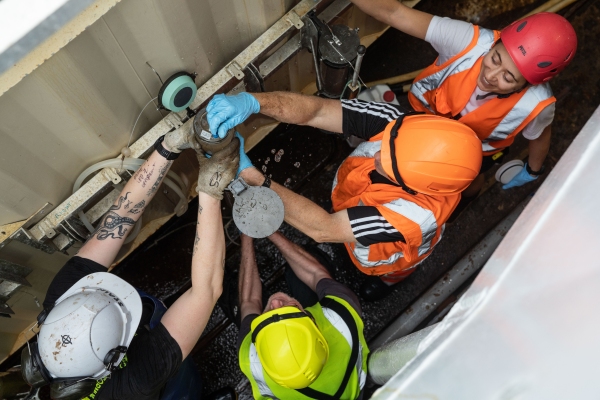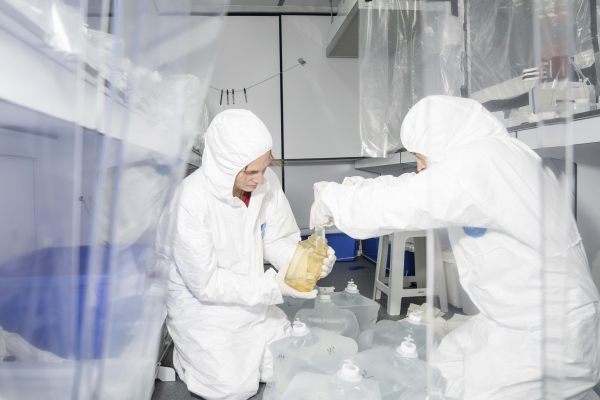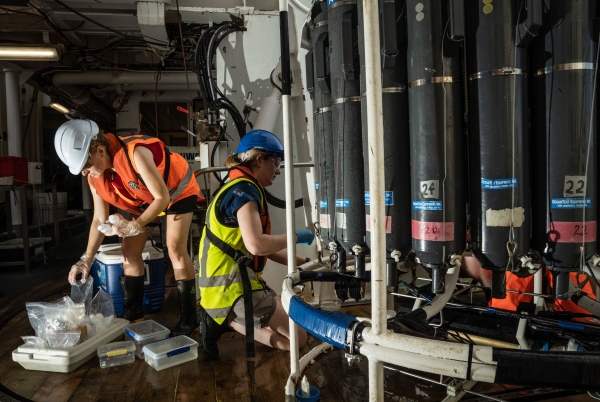RV Tangaroa voyage update
The impact of metal-rich ash on marine ecosystem function in the water column and seafloor is poorly understood and highly dependent on regional ocean properties. Ashfall can impact biogeochemical processes on the seafloor, including through impact carbon and nutrient cycling, acidifing pore waters and leaching trace metals. This voyage represents a significant opportunity to collect samples to understand how these processes impact seafloor geology, biogeochemistry, and ecosystem health.
17 April 2022
During the transit 6 day from Wellington to Tonga, the crew has been busy setting up various labs to undertake the science of muddy sediment cores to the ultra clean trace metal lab.
RV Tangaroa arrived at the first sampling site, called FAR FIELD, which lies at a depth of 2,620 m. The water samples collected using the CTD initially indicated a plankton bloom, but early analysis of the chlorophylle levels showed this was not due to the eruption. Water collected was also used to check for the presence of trace metals.
To have a look at the seafloor, the DTIS towed camera was deployed and showed a mixture of mud and gravel-sized rocks. Benthic life appeared sparse with some isolated glass sponges, holothurians and borrows. A multicorer was then used to take samples of the seafloor sediments, which showed no initial indication of volcanic ash.



